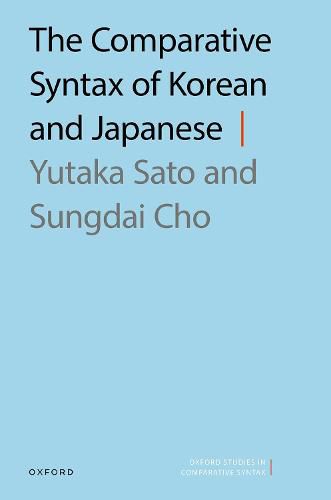Readings Newsletter
Become a Readings Member to make your shopping experience even easier.
Sign in or sign up for free!
You’re not far away from qualifying for FREE standard shipping within Australia
You’ve qualified for FREE standard shipping within Australia
The cart is loading…






This book provides a detailed survey of Korean and Japanese syntax from a comparative perspective, based within a generative framework. Yukata Sato and Sungdai Cho demonstrate that while the two languages exhibit remarkably similar morphosyntactic features, they behave differently in specific types of construction, with the main differences observed in genitive marking, sentence negation, Negative Polarity Items, the formation of causatives, and passivization. The book also explores pragmatic and sociolinguistic issues in the two languages, and shows that they differ in the perception and realization of 'givenness' as a topic marker and in the influence of relationships of power and distance on the use of honorifics. The authors further offer additional context by exploring the typological relationship between Japanese and Korean and the surrounding languages such as Ainu, and the Chinese and Altaic languages, as well as providing socio-cultural and historical background.
$9.00 standard shipping within Australia
FREE standard shipping within Australia for orders over $100.00
Express & International shipping calculated at checkout
This book provides a detailed survey of Korean and Japanese syntax from a comparative perspective, based within a generative framework. Yukata Sato and Sungdai Cho demonstrate that while the two languages exhibit remarkably similar morphosyntactic features, they behave differently in specific types of construction, with the main differences observed in genitive marking, sentence negation, Negative Polarity Items, the formation of causatives, and passivization. The book also explores pragmatic and sociolinguistic issues in the two languages, and shows that they differ in the perception and realization of 'givenness' as a topic marker and in the influence of relationships of power and distance on the use of honorifics. The authors further offer additional context by exploring the typological relationship between Japanese and Korean and the surrounding languages such as Ainu, and the Chinese and Altaic languages, as well as providing socio-cultural and historical background.